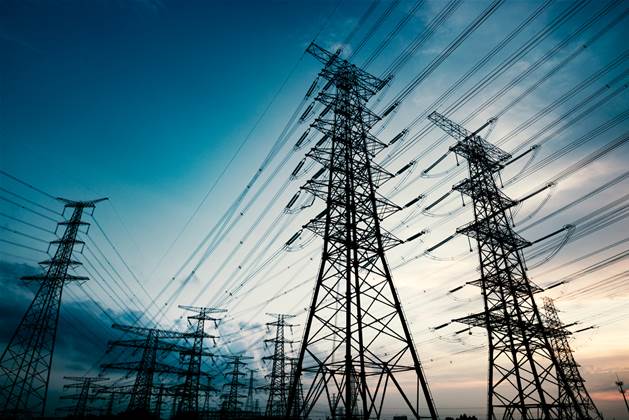Making a case that Europe “sleepwalked” into the recent crisis of its energy markets, the prosecutor might offer as evidence the trend in its gas futures, which rose in price steadily over the preceding year — until at the winter peak they hit almost six times’ the average of the previous five years.

At about the same time as Europe began to experience its energy crisis, China had extensive electricity blackouts. Parts of the north literally had no power, not even for street lights. Like the European crisis, China’s was directly related to policy and energy transition and was associated with a surge in energy demand that was both seasonal and a recovery from COVID-impacted consumption levels.
Australia’s Energy Security Board (ESB) has done its best — as the citations below attest — to alert the public to serious risks in Australia’s energy outlook.
“The ESB considers the existing market, and its related arrangements, are unlikely to be sufficient to ensure the commercial provision of the right mix of resources required as the market transitions towards a higher penetration of variable renewables. This is due to a range of uncertainties currently facing investors in the market. These include technological and demand uncertainty through to uncertainty over the timing of the closure of ageing thermal generation plant. Government interventions to drive investment in new generation and those to manage the closure of existing plant also significantly impact the investment environment. These interventions can create investment uncertainty and dampen spot and wholesale market prices, impacting long term investment signals for the right mix of resources necessary to support the energy transition."
— Energy Security Board Final advice to Ministers 27 July 2021
“To encourage investors to take long-term capacity risk, market arrangements that explicitly value capacity, separately from the energy price, are needed to support the quantum of build required over the next decade. Under current arrangements electricity generators are paid for the energy they produce but not the capacity they make available. Valuing capacity explicitly complements existing spot and contract market revenue streams, and in doing so provides an ‘investable’ and enduring long-term signal. The NEM does not value capacity at present but relies on extreme pricing volatility as a fundamental driver for new investment. A future high-Variable Renewable Energy (VRE) power system with low-to-no fuel costs will diminish the value implicit in current spot and contract prices, which are currently low on average. Power Purchase Agreements — which predominantly underwrite VRE — may not be in such plentiful supply. Adjustments to design settings could address the issues but are inconsistent with both government and community expectation.”
— ESB 27 July 2021
“Resource adequacy is a real and present danger. We have had a very mild summer, and everyone has got very complacent, but we only need one hot summer in three jurisdictions together or a major unexpected outage at a big coal plant and we’ve got a real resource adequacy issue right on top of us.”
— ESB 27 July 2021
The ESB made a strong argument for policies that promote capacity in the electricity system — as a balancing factor for the impending reliance on variable renewable energy sources. In the short term, investment in renewables is eroding the financial viability of base load coal-fired power by crushing the price of power in daylight hours.
Are the warnings having any effect? Aside from the Federal Government’s commitment to gas-fired “firming” electricity generation, the ESB makes it clear that investors are not responding to the likely emergence of power shortages arising from the failing economics of coal plant and variability of renewable generation. Unplanned retirement of coal plant may impose disruptive supply and cost risks.
Coal fired power is retiring faster than expected
The dimensions of the base load coal risk were made plain in December 2021, when the Australian Energy Market Operator issued a draft Integrated System Plan for 2022, which belled the cat:
“Coal retiring two to three times faster than anticipated. Current announcements by thermal plant owners suggest that about 5 gigawatts (GW) of the current 23 GW of coal capacity will withdraw by 2030. However, modelling suggests that 14 GW may do so. Over the past decade, coal-fired generators have withdrawn from the market before their announced dates, and competitive and operational pressures will intensify with the ever-increasing penetration of cheap renewable generation. All brown coal generation and over two-thirds of black coal generation could withdraw by 2032.”
AGL indicated this week that its Bayswater power station may retire three years early in 2033 and that its Loy Yang A plant will retire in 2045 instead of 2048. AGL acknowledged the uncertainty in the outlook, indicating the closure “windows” are 2030-33 and 2040-45 respectively. Bayswater produces 13,000 Gigawatt hours (GWh) of power last year, while Loy Yang A generated 14,600 GWh. Combined, Bayswater and Loy Yang A contribute about 10% of Australia’s total electricity.
AEMO did not say what would offset the loss of base load energy by 2030, but it did say that to replace the 23GW of coal fired power that will go by 2050, Australia will require to have in place 620 GWh of power storage, 7 GW of dispatchable hydropower and 9GW of gas-fired power for peak loads and firming. So, if 14GW of plant is shut by 2030, something more than half that new capacity may be required very soon. It is important to note that the storage assumption is predicated on the emergence of viable 8-hour power storage technology.
That risk of blackouts or very expensive power (or both) is in itself very serious. But there are two further risks that might seriously exacerbate any systemic failure. Both arise from failure in Australia’s gas market, which accounts for 27 percent of energy use.
AEMO March 2021 Gas Statement of Opportunities updated an earlier caution about the effects of declining natural gas production from Bass Strait. AEMO said “There is now projected to be sufficient supply to address the near-term shortfall forecasts of recent GSOOs (deferring shortfall forecasts to at least 2026), provided the first gas from Port Kembla Gas Terminal is delivered ahead of winter 2023 and other committed field developments and pipeline expansions proceed as planned.”
The caveat, however, is important: the Port Kembla LNG terminal must be operating before the winter of 2023. AEMO explained that the underlying production issues had deteriorated. “These southern supply scarcity risks appear one year earlier than projected last year, due to more rapid decline in producers’ forecasts of maximum daily production from legacy southern fields in Longford, Victoria. The last major southern gas field offering flexible supply is expected to be depleted ahead of winter 2023, reducing gas system resilience.”
Domestic gas will increasingly come from expensive LNG imports
So the first problem with gas is that established supply is running down. Bass Strait supply is critical because the balance of established East Coast gas supply — largely from the Cooper Basin in central Australia — was effectively diverted to export when three LNG export facilities at Gladstone began operation in 2015.
Australia’s east coast gas supply has gone from relative abundance to near shortage in the space of a few years. This in a country that has been the world’s largest LNG exporter since 2020. In effect, we are one cold winter — or perhaps unexpected coal power plant closure — away from reliance on LNG to meet domestic gas demand. Weather is important, driving total Australian gas use up or down by 15 percent or more in any given year.
LNG imports highlight the second gas issue – the price. East coast gas prices have been low, mainly because a lot of gas came from Bass Strait oil production as a free option. In Victoria especially, the State-owned Gas and Fuel Corporation was for decades a fierce — cheaper — competitor with the State Electricity Commission of Victoria.
East Coast gas prices changed when scarcity arrived in 2015, shifting up from around $3 a gigajoule to $9-10. Since then, big gas users have faced the reality of gas prices roughly three times’ their established marker. Some have complained that even at the higher prices contracts were hard to find. LNG is another matter.
Controversy over pricing domestic gas — mainly since 2015 — led the ACCC to formulate what it estimates is the “netback” of traded LNG prices to a local gas supply. (LNG is subject to expensive processing and shipping cost.) The ACCC says the netback since 2015 or so has mostly been between $2 and $10, though Australian export LNG has largely up to now been contracted by utilities, mostly in Japan, Korea and lately China, at stable prices — often with State backing. The northern winter 2021-22 changed the picture.
According to ACCC estimates published in February, Australia’s LNG “netback” climbed from about $15/Gj in September last to about $41/Gj in January. Their outlook estimates put the price at about $35/Gj through to early 2023 and $18-20/Gj through to early 2024.
In short, as Bass Strait decline creates shortfalls Australia’s marginal supply of gas is fully exposed to the global market for LNG. The Asian market, where Australia’s pricing is usually set, has typically higher prices than other LNG markets — recently as much as three times’ higher.
Energy transition has been disruptive in Europe and China
As we look forward, the conditions that created this northern winter’s LNG price hikes are at least partially related to energy transition policies in Europe and China.
China’s rationalisation of coal production has involved closing a large number of its domestic mines and promoting larger output from the most efficient, a policy agenda that was accelerated during the slowdown imposed by COVID management. Coal production was down as the economy recovered and pushed coal prices to high levels, forcing price-capped power companies to reduce output. Inevitably, China brought on alternative power and sharply uprated its LNG imports. At the same time, the EU’s transition from fossil fuels ran up against shortages of gas over the disputes over Russia’s Nord Stream2 supply. In combination, European and Chinese demand drove up LNG prices to unusually high levels.
In summary, the Australian energy outlook is on a transition that may be something of a high wire act. Safety nets may not be as certain as we would like.
Much of Australia’s coal power plant was built in the 1980s or earlier. We can see ample evidence of the age of plant in the instances of unplanned outages, which have appeared with discomfiting frequency. As we advance the process of bringing on variable renewable supply, the need to operate coal plant for much less than 24/7 will increase. That, together with the eventual need to finance plant renovation, will drive the decisions to close that are flagged by AEMO. No doubt the pressure to account for site rehabilitation costs will also bear on timing.
In the absence of a quick solution to the need for economical 8-hour power storage technology, gaps in Australia’s power supply that arise from coal plant closures will need to be fuelled by gas. AEMO assumes that to be the case — but also assumes that domestic gas is priced at around $8/Gj. In all likelihood LNG imports will be priced as the ACCC has indicated; more than double the recent domestic pricing.
It is worth noting that at last report the Port Kembla LNG terminal had no buyers for its gas, which raises the question of its timely completion and ability to solve any shortfall.
Three further factors that bear on Australia’s immediate outlook are demand-related. One is the potential hike in electricity demand when Australians are offered attractive electric vehicle choices. The advanced markets for EVs are experiencing rapid growth and the range of choice is expanding extremely quickly. Right now, production is inadequate to demand globally, but that will change. EVs will add large increments to power demand and Australian urbanisation imposes no great limitations on uptake.
A second factor is the introduction in October of a scheme that pays large users to cut power use during periods of high demand. Effectively, large users can bid a price to shut off and so avoid the often very high costs of short term additions to supply. How that option is used and what effect it has over time is an unknown, though it clearly has potential to reduce the extremes of demand and cost.
Stability value is not priced into our energy market signals
The final factor is demand destruction. It would appear likely that Australia’s experience of globally competitive energy costs will be interrupted and that supply may also be at risk if the transition “safety nets” are inadequate. Longer term, Australia may be well placed for globally competitive electricity based in renewables, but in the short term our power market is facing cost and reliability risks.
The Federal Government’s National Gas Infrastructure Plan acknowledges the risks of supply shortages and pins its short term hopes on higher production from contingent gas reserves in established fields. Later, it hopes that unproven fields such as Beetaloo and Narrabri can fill the gap. Neither the short nor long term options present confident solutions in terms of volumes and both are likely expensive. Galilee, which is also nominated, is a basin that industry professionals dismiss for its history of failed exploration. For reasons that are unclear, the large, known and untouched low-cost gas reserves in Western Australia have not figured in any planning for what will be a challenging energy outlook.
In some ways, the picture is summed up by ESB’s proposal for a “capacity value” in the overall calculation of energy markets. That is, a price or cost that reflects the value of reliability. When we flick the switch, our heating or lighting comes on. The absence of such a mechanism reflects a belief that markets respond to opportunity and price signals. Which is obviously true. But do they always meet expectations?
Some years ago the electricity authority in an Australian State adopted a strategy that delivered least cost power, a policy similar to that which has operated in Texas. The effect in the Australian case was to minimise the “capacity value” — effectively, to minimise backup. Over time, relatively low costs had the unsurprising effect of promoting both consumption and dependency, until the year that plant failure and unusually hot weather intervened. Extended blackouts for large population centres put an emotional end to both the policy and a few careers.
In the case of gas, Australia has been conducting an experiment: we have behaved as if we, like Japan, must import energy and have switched the domestic market to “import parity”. Shortly, it seems, we may switch literally to import dependency — at least at the margin. And in a decade or less our domestic gas market will be wholly import dependent unless one of a handful of very uncertain fields replace Bass Strait gas.
The energy transition is upon us, and it’s not plain sailing.
Michael Gill is Executive Counsellor & Director Asia at Dragoman




_(22).jpg&h=140&w=231&c=1&s=0)






 iTnews Executive Retreat - Security Leaders Edition
iTnews Executive Retreat - Security Leaders Edition












_(1).jpg&h=140&w=231&c=1&s=0)



